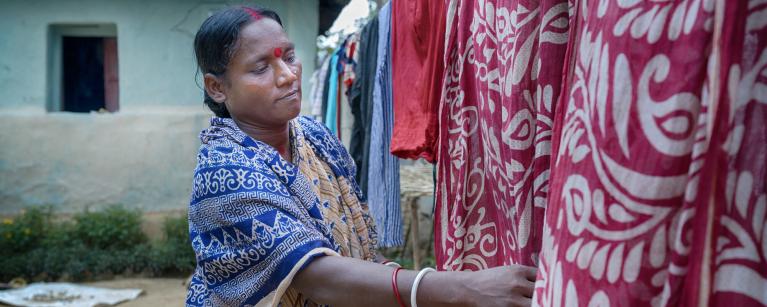As March unfolds, the world is adorned with vibrant reminders of International Women's Day (IWD). From towering LED displays to captivating commercials and lively events, the atmosphere is imbued with a celebratory spirit. Yet, amidst this festivity, one might ponder: Are these gestures mere tokens, or do they signify a deeper acknowledgment of women's enduring struggles and invaluable contributions?
IWD's origins trace back over a century, rooted in the fervent endeavors of women's groups advocating for fundamental rights such as suffrage, education, and recognition as equals. These historical milestones, marked by both triumphant achievements and poignant sacrifices, serve as a testament to the resilience and determination of women worldwide. However, the journey toward genuine equality is far from complete. While celebrations abound, the essence of honoring womanhood and its intrinsic virtues remains an ongoing pursuit.
The Stark Reality: Violence Against Women in South Asia
Despite notable progress, violence against women remains a grim reality across South Asia. In Bangladesh, 68% of married women have experienced some form of domestic violence, according to the Bangladesh Bureau of Statistics (2022). India, too, faces a crisis, with over 31,000 rape cases reported in 2022, a figure that barely scratches the surface given the widespread underreporting.
The National Crime Records Bureau (NCRB) states that crimes against women in India rose by 15.3% in just one year. Pakistan has also seen an alarming rise in gender-based violence, with nearly 5,000 cases of rape reported in 2023, and countless others going unrecorded due to social stigma.
Conflict zones in South Asia further exacerbate the plight of women. The ongoing crisis in Myanmar has led to an increase in sexual violence against Rohingya women, many of whom have sought refuge in Bangladesh. Reports from Afghanistan reveal that since the Taliban’s return to power, women have been systematically erased from public life, with severe restrictions placed on their education, employment, and freedom of movement.
Women in Leadership: Progress and Persistent Gaps
The past decades have witnessed strides in women's representation across various sectors. In South Asia, the number of women in leadership roles is growing but remains uneven. Bangladesh has one of the highest proportions of women in political leadership, with former Prime Minister Sheikh Hasina serving multiple terms. However, female representation in corporate leadership remains low—only 4.5% of CEOs in Bangladeshi firms are women. India has seen some improvements, with 19% of board seats in major companies now held by women, yet only 8% of executive roles are occupied by them (McKinsey, 2023).
Meanwhile, Afghanistan remains an extreme case, where women are barred from public office and leadership roles entirely. Pakistan, too, faces significant challenges, with women holding just 5% of senior managerial positions despite making up nearly half the population. The lack of women in decision-making positions continues to be a major barrier to gender equity in the region.
Redefining Leadership: Embracing Feminine Qualities
As we commemorate IWD, it's imperative to reflect on the essence of our celebration. Are we merely acknowledging women's achievements, or are we also valuing the unique qualities inherent in womanhood? Traits such as empathy, resilience, compassion, tolerance, cooperation, and determination are often undervalued in traditional leadership paradigms. The prevailing stereotypes equate effective leadership with decisiveness, authority, and confrontation— attributes traditionally deemed masculine.
This bias often pressures women in leadership to conform to these masculine norms, potentially suppressing their authentic selves. Such conformity not only undermines the richness of diverse leadership styles but also perpetuates the notion that masculine traits are superior. Figures like Sheikh Hasina, Indira Gandhi, and Benazir Bhutto have demonstrated strong leadership but have also often been compelled to showcase traditionally masculine traits to assert their authority. In contrast, Jacinda Ardern, the former Prime Minister of New Zealand, led with a refreshing approach, embracing empathy, compassion, and even motherhood while in office, demonstrating that leadership can be both strong and nurturing.
The Role of Men: A Shift from Heroic Masculinity
Achieving gender equality should not be about replacing men with women in leadership but rather fostering a balance where both masculine and feminine qualities are valued. Too often, leadership is equated with dominance and control, sidelining the importance of care, collaboration, and emotional intelligence. Men must be active participants in this shift, embracing a leadership model that is not solely based on power and authority but also on respect, inclusivity, and emotional intelligence.
Unfortunately, male engagement in gender equality movements has been declining. Many men with strong feminine qualities feel isolated in leadership spaces that prioritize aggression over empathy. We must recognize that progress will only be sustainable if men and women work together, moving beyond rigid gender norms and embracing a leadership style that values complementarity over competition.
A Call to Action: Nurturing Feminine Qualities in All
International Women’s Day should not just be about celebrating womanhood, it should be a moment for reflection on how we can nurture feminine qualities in everyone. Compassion, patience, cooperation, and resilience should be embraced by all, regardless of gender. If we truly want a more equitable world, we must move beyond merely placing women in leadership roles; we must create spaces where their unique strengths are valued and encouraged.
I therefore invite you to create a space where we can discuss varied sheds of feminist schools of thoughts and ways in which they can be a part of our socio-cultural activities, especially with young people.
